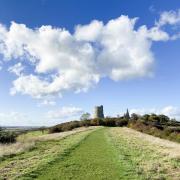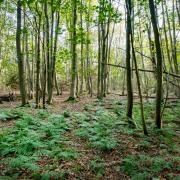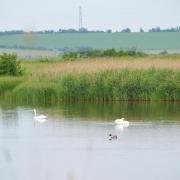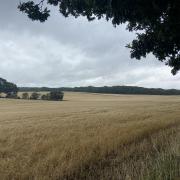Despite being one of the best places in the country to view this month's eclipse of the moon, the night skies over Essex could be under threat
THIS month will see one of the rarest and most striking events of the astronomical calendar. On February 21, a total eclipse of the moon will be visible from about 1.45am. Essex is one of the best counties in the UK for viewing the night sky and The Philips Dark Skies Map shows some of the best skies can be seen from the north of Braintree District and the seaward end of the Dengie. But the enjoyment of this spectacular and striking event is under threat as the visibility of the stars over Essex is increasingly impaired behind a smog of light pollution. There are many thousands of lights on all night in our county and most of them shine light into the sky. The light interacts with dust, pollution and moisture in the atmosphere to form an orange sky glow over our towns and villages. Reasonable skies can be found north of Bishop's Stortford to Colchester (avoiding Stansted Airport), in the central part of Tendring District, Mersea and along the coast from south of Abberton to Burnham. But rural Essex suffers moderate to bad sky glow caused by the light pollution from the towns. The problem is the result of the cumulative impact of all lighting, with streetlights, industrial estate floodlights and retail park lights among the main culprits. Most streetlights in Essex are the outdated low pressure sodium type which emit around 30% of their output uselessly into the sky. Many retail areas are lit with globe lights, which if unshielded emit 50% of the output to the sky. Added to this, nearly all wall and pole mounted floodlights in Essex, often found in industrial areas, are installed, facing sideways instead of downwards. Scientific studies are also pointing to wider impacts affecting many wildlife species including bats, birds and insects. In specific circumstances lighting can deter crime, but in others it could actually encourage it. Criminals need light to see what they are doing and most crime actually occurs in daylight. Clearly the main purpose for lighting at night is safety, which is vitally important, but lighting designed to be low energy, shine downward and switched off when not needed, could dramatically reduce light pollution and combat climate change. There has been some progress in recent years which may have slowed the rate of deterioration in our skies. Essex County Council has started using modern designs for most new and replacement lighting which shine light downwards. The single most important move is the Essex County Council's switch off of most streetlighting at midnight, which is currently being trialed in Maldon District and Uttlesford District. James Abbott lives in Rivenhall, has a degree in astronomy and is a district councillor in the Braintree District. James explains: 'The night sky is part of our environment and should be protected. Children are being denied the chance to learn at first hand about our place in the universe and only a minority of them can even see our own galaxy, the Milky Way. 'Specific lights out events now take place in cities and towns across the UK. These are mainly aimed at raising awareness about climate change, but could also be used to coincide with major astronomical events.' On February 21, the total eclipse of the moon will be visible from 1.45am. Over the next hour or so, the full moon will gradually slip into the earth's shadow, turning a deep red colour. As it does so, the stars, normally drowned out by the full moon, will reappear. The moon will remain totally eclipsed for about an hour until 4am;


























